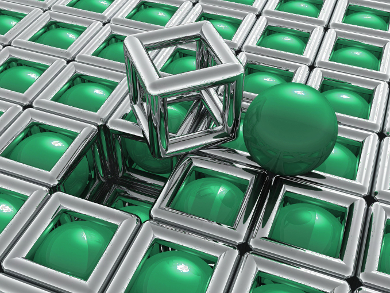Diverting a power plant’s electricity to operate carbon capture devices represents lost income. One way around this is to use adsorbent metal-organic frameworks that employ solar energy to trigger carbon capture and containment. However, conventional systems require UV light. Low UV-light penetration limits the thickness of the adsorbent layers that can be used.
Bradley Ladewig, Monash University, Melbourne, Australia, Matthew Hill, CSIRO, Victoria, Australia, and colleagues report new metal-organic carbon capture frameworks that work using only visible light. Mg-MOF-74 (magnesium dioxidoterephthalate) and MIL-53(Al) (aluminum hydroxoterephthalate) are well-known gas adsorbers. The researchers treated these materials with methyl red dye, which blocked pore access. Exposure to visible light induced reversible structural changes in the dye that opened access to the internal pores, allowing CO2 molecules to enter the framework.
For the rigid Mg-MOF-74, prolonged irradiation increased CO2 uptake by as much as 84 %. The flexible MIL-53(Al) framework is stable upon exposure to moisture, and introducing guest molecules modulates its structural transformation (and thus its CO2 uptake) in response to light.
- Visible Light-Triggered Capture and Release of CO2 from Stable Metal Organic Frameworks,
Richelle Lyndon, Kristina Konstas, Aaron W. Thornton, Aaron J. Seeber, Bradley P. Ladewig, Matthew R. Hill,
Chem. Mater. 2015.
DOI: 10.1021/acs.chemmater.5b02211




